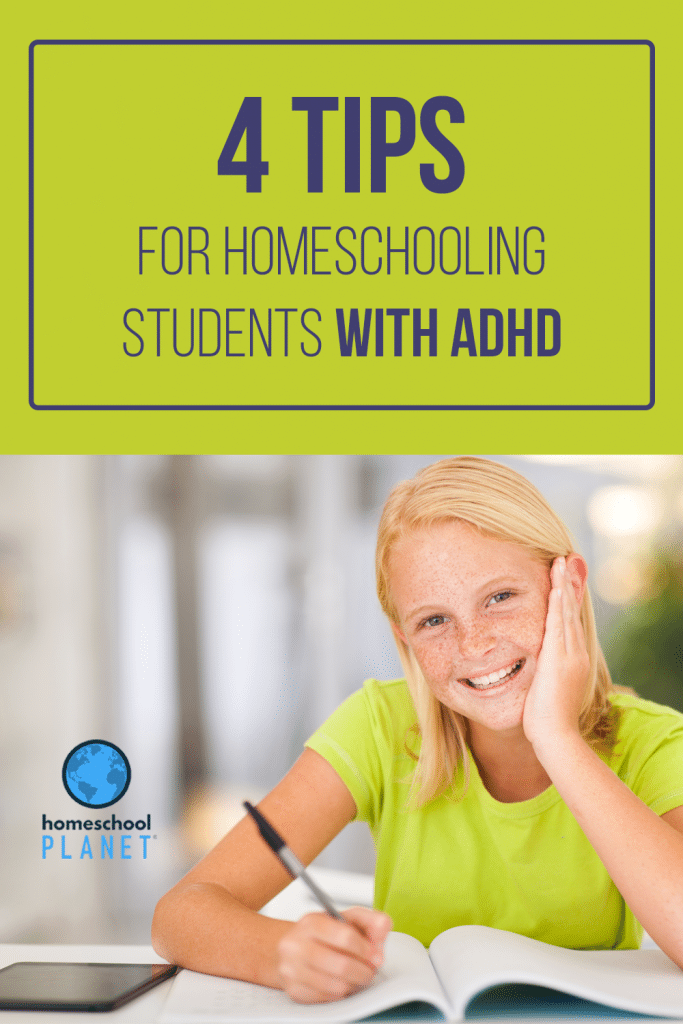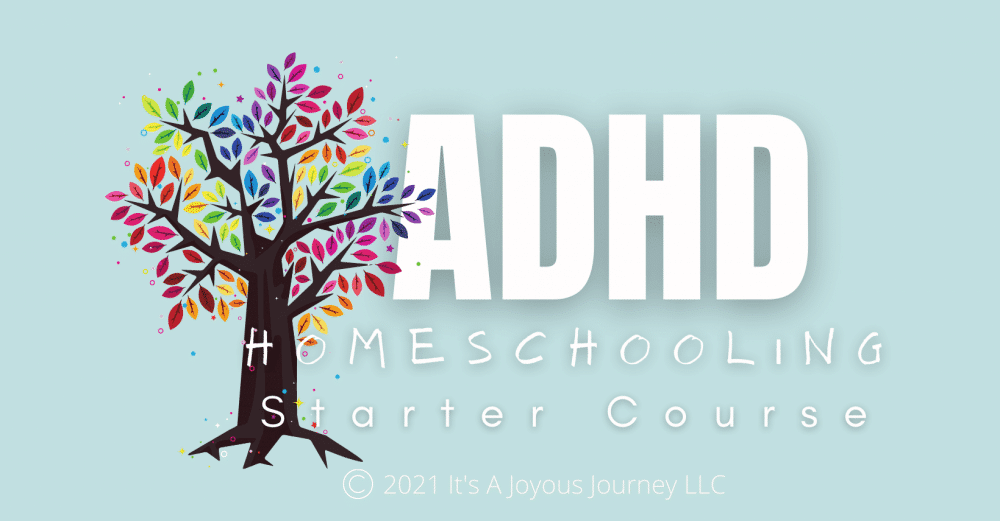4 Tips for Homeschooling Students With ADHD
Homeschooling students with ADHD is challenging, but as a mom who has graduated two of these amazing human beings from her homeschool, Melissa can tell you that every struggle is worth it. A special welcome to Dr. Melissa Felkins as our guest writer today.

Although you can never expect smooth sailing all the time, there are some simple strategies that will keep you in calm waters much more often.
4 Tips for Homeschooling Students with ADHD
1. Set Realistic Expectations
When it comes to setting expectations for our kids with ADHD, sometimes it’s hard to know whether we’re expecting too much or not challenging them enough. It can be a fine line, for sure! The sweet spot is to challenge, but not overwhelm. Take your cues from your child. If you see those telltale signs that they are reaching their limit, it’s better to pull back. If you keep pushing, your child is likely to shut down, and all learning for that day could be lost.
2. Minimize Distractions
Talk to your child about what kinds of things cause the most distraction for them and work on minimizing those things. Is it household activity? Find a space in the house that is away from the daily hustle and bustle of the family. Is it noise? Get a pair of noise-canceling headphones and let them listen to instrumental music while they work. Is it that hard chair they have to sit on at the kitchen table? Maybe it’s time to invest in a beanbag. The key here is to communicate with your child. Ask them what distracts them the most. You might be surprised by their answers!
3. Shorten Directions
Many kids with ADHD have slower processing skills and shorter working memory. Their brains are not able to process or remember several directions at once. The overwhelm this causes could result in them shutting down or having an emotional meltdown. It only gets worse when we interpret their behavior as disobedience. You can avoid these explosive situations by shortening tasks, giving one or two directions at a time, and preparing your child ahead of time for upcoming transitions.
TIP: Use Homeschool Planet to break down each step into a separate assignment. That way, your kids can complete one step at a time and mark it off as they go!
4. Be Structured, Yet Flexible
Structured flexibility is my favorite phrase when I talk about homeschooling kids with ADHD. They need a framework to keep them on track, but they’re not always going to stay on track…and that’s okay! A flexible plan allows your child to go at his or her own pace, experiencing progress and success along the way. This type of individualized learning experience is one of the most unique benefits that your child with ADHD will gain from homeschooling.
TIP: Homeschool Planet makes structured flexibility so easy for you, as a parent! When your child needs a little more time to learn a concept, simply move things around with a click of the mouse or drag and drop an assignment to the next day.
Do you want to learn more about how you can give your child with ADHD a positive homeschooling experience and solid educational foundation?
Sign up for my FREE 5-day mini-course, ADHD Homeschooling Starter Course! We’ll dive deep into realistic expectations, learning environments, curricula choices, structured flexibility and organization, and family matters.
Find more tips on homeschooling kids with ADHD on her blog, It’s A Joyous Journey.
Join her ADHD Homeschooling Support Facebook group community.
Dr. Melissa Felkins has a heart for encouraging and supporting families who are homeschooling kids with ADHD. Her experience as a former public-school teacher/counselor and homeschool mom of 10 years to kids with ADHD, dyslexia, and dysgraphia, as well as her educational background in counseling and educational psychology, give her a unique perspective in addressing both mental health issues and individual learning needs. She has done extensive research on the experiences of homeschool students with ADHD, including her dissertation study, which was published in 2018.


